From seductive sweetness to white poison? Is sugar really unhealthy, or is it even completely harmless to our bodies when consumed in moderation? With this article, I want to draw your attention to a more conscious approach to sugar and provide you with all the useful facts about it.
Why sugar can be harmful
Sugar is a component of our bodies in the form of blood sugar. Sugar is also found in natural foods , such as fruits, vegetables, and grains . These forms of sugar generally do not pose a problem.

However, when it comes to the sugar provided to us by the food industry, such as table sugar and glucose syrup, you should already have an overview of the amounts and types to avoid endangering your health. Blood sugar fluctuations can be easily balanced by the body, but only if they occur within normal limits. However, high consumption of industrial sugar leads to blood sugar fluctuations that place a strain on the body. It damages teeth, promotes nutrient deficiencies, causes blood sugar fluctuations, promotes chronic inflammation, disrupts the intestinal flora, and promotes the development of cancer.
The Glycemic Index (GI)
How quickly and how high blood sugar levels rise after consuming a food is measured using a specific parameter: the glycemic index. The higher the glycemic index, the worse and unhealthier carbohydrates are.
Pure glucose has the highest GI of 100. White bread, for example, is between 70 and 85, and cola is at 70. Whole grain products have a GI of 40, while pulses and most fruits and vegetables are even lower.
Because a low GI causes blood sugar levels to rise slowly, foods made from whole grains, legumes, fruits, and vegetables place little strain on the body. Generally, foods with a GI above 50 are considered worse than those below 50.
This shows you that the consumption of sugar and carbohydrates has very different effects on blood sugar levels. Furthermore, the sugar from healthy foods causes only minor fluctuations in blood sugar levels and thus serves as energy without harming your health.
With natural sugar in fruits or grains, you also absorb accompanying substances such as vitamins, minerals, and fiber. Isolated and refined forms of sugar, on the other hand, consist exclusively of sugar without these accompanying substances. These have a negative impact on your metabolism.
What makes sugar healthy?
Only sugar found in natural foods, such as fruits, grains, nuts, legumes, and vegetables, can be considered healthy sugar. However, sugars that you consume in industrially processed and isolated forms are at best less harmful, but none of these sugars are actually truly healthy – with a few exceptions.
Health problems and risks
For thousands of years, humans have not consumed refined flour or any type of isolated sugar. These changes are difficult for our bodies to cope with, and they manifest themselves in various health problems beyond tooth decay.
In addition to the aforementioned damage our bodies can experience, among other things, from the increased intake of isolated sugar, nutrient deficiencies are a major concern. If we were to eat a whole sugar beet, for example, we would consume not only carbohydrates but also fiber, vitamins, and minerals. Nature has combined everything needed for a balanced nutrient supply in fruit.
Unfortunately, table sugar and other foods no longer contain any nutrients. Since sugar contains no vitamins, minerals, or fiber, the body must obtain the necessary nutrients to process the sugar from its own stores. Vitamin B1 and calcium, in particular, are said to be used more frequently with high sugar consumption.
People who eat a lot of foods containing isolated carbohydrates are bound to suffer from vitamin and mineral deficiencies at some point. And here we can lump sugar, white flour, and white rice together. All of them have lost almost all of their nutritional diversity as a result of the intensive processing.
Consequences of persistent nutrient deficiencies include infectious diseases, tooth decay, osteoporosis, hyperactivity, listlessness and premature aging.

Tips for switching to a low-sugar diet:
- Avoid sugary drinks – drink kombucha and high-quality water instead.
- Start the day with a sugar-free breakfast.
- Eat lots of fresh, raw foods with as many bitter substances as possible.
- Wild herbs counteract nutrient deficiencies.
- Prefer valuable carbohydrate-rich foods such as sprouts, nuts or sweet potatoes.
- Eat as few processed foods as possible.
- Read food ingredient lists and identify hidden sugars.
- Use alternative sweeteners.
- Get into the habit of chewing thoroughly.

Labeling of sugar
Reading ingredient lists while shopping is sometimes not so easy – sugar hides behind many different names, especially in all kinds of sugar syrup. Syrup is cheap, sweetens even more intensely due to its usually higher fructose content, and has now crept into almost all convenience foods.
Sugar can have the following names:
Sugar |
sugar syrup |
Alternative sweeteners |
|
Dextrose Fructose gelling sugar Barley malt extract Invert sugar Rock candy Caramel sugar lactose Maltose Maltose Lactose cane sugar Sucrose glucose vanilla sugar white sugar |
Fructose syrup |
Date syrup Fruit concentrates Fruit juice concentrates Honey Coconut blossom sugar Palm sugar Stevia Grape fruit sweetness |
Watch out!
When reviewing ingredient lists, it is easy to misjudge the sugar content and the sweeteners used.
- Sugar is hidden behind names that do not directly suggest sugar, such as dextrose or isoglucose.
- If sweetening ingredients are listed multiple times, they will be pushed down the list of ingredients, but the total amount of sugar will be enormous.
- Products labelled “unsweetened”, such as rice milk, still contain 7.2 g of sugar per 100 ml.
- Products such as pizza, vegetarian spreads and much more contain various added sugars.
Healthy sugar alternatives
Agave syrup
Agave syrup is extracted from the sap of agave plants. After extraction, it is filtered, heated, and thickened, resulting in a sugar content of 76 percent. It is slightly thinner than honey and consists primarily of fructose and glucose, with the fructose content significantly predominating at an average ratio of 7:3. This gives agave syrup the lowest glycemic index of all sweeteners at 15, making it metabolized almost insulin-independently.
Caution: A high fructose content can also have negative effects. Fructose travels directly to the liver via the bloodstream, where, if present in large quantities, it is converted into fat.

maple syrup
Maple syrup is the boiled-down sap of the Canadian maple tree. About 40 liters of sap yields approximately one liter of syrup. It has a slightly caramel flavor and contains approximately 67 percent sugar, a 1:1 ratio of glucose to fructose, as well as small amounts of minerals such as potassium, iron, and magnesium. Maple syrup has a glycemic index of 55 to 65 and is slightly less sweet than table sugar.
Apple syrup
Apple syrup is also known as apple sweetness. During production, apples are pressed and stewed to produce juice. Apple syrup is a regional sweetener, with a slightly sour taste and a hint of apples. Depending on the production process and temperature, minerals and secondary plant compounds are retained. It should be noted that apple syrups contain approximately 60% fructose.
Date syrup
Date syrup is made from dried dates. Dates contain slightly more glucose than fructose. Date syrup also contains the minerals magnesium, potassium, iron, folic acid, zinc, and calcium, as well as vitamin A.
Date paste can easily be made at home in raw form. It undergoes alkaline metabolization and is therefore more valuable than store-bought date syrup, which loses nutrients when heated.
Recipe:
Soak 200g of dates in water for at least 2 hours. Then puree and season with cinnamon, vanilla, or cardamom, if desired. The amount of water determines how thick the paste will be. Store in a sealed jar in the refrigerator for up to a week.

Honey
Like sugar, honey consists of glucose and fructose, but also contains the minerals potassium, magnesium, calcium, B vitamins, vitamin C, and enzymes. It's recommended to purchase cold-pressed honey from a local beekeeper. Honey is said to have anti-inflammatory and wound-healing properties.
Coconut blossom sugar
This is the thickened, crystallized flower sap of coconut palms. Like regular sugar, it is sucrose, composed of one part glucose and one part fructose. It has a low glycemic index of 35 and barely raises blood sugar levels. In addition to minerals such as iron, magnesium, zinc, and potassium, it also contains the fiber inulin. It has a slightly caramelized flavor and is not quite as sweet as table sugar.
Rice syrup
Rice syrup is made from whole rice grains or rice flour and contains no fructose. Instead, it contains a special form of glucose that must first be converted by the body and thus causes blood sugar levels to rise more slowly than "regular" glucose. Rice syrup also contains some minerals such as potassium, iron, and magnesium and has a slightly malty, nutty flavor. Its sweetness is only half that of table sugar.
Stevia
Stevia, also known as sweet herb, is a plant with an intense sweetness and a licorice-like flavor. Approximately 20% of the green leaves consist of the sweetening substances stevioside and rebaudioside A, which are 300 to 400 times sweeter than sugar. However, intensive processing is required to extract these sweetening substances. Stevia drops, tablets, or tablets contain no calories and are metabolized without insulin, but they are not beneficial to health.
Yacon syrup
Yacon syrup, similar to maple syrup, has a caramel-like sweetness. It is made from the tuber of the yacon plant, which is related to Jerusalem artichoke. Like Jerusalem artichoke tubers, yacon tubers contain plenty of water-soluble fiber. In addition to inulin, yacon tubers also contain fructooligosaccharides (FOS). FOS have a prebiotic effect, serving as food for the good gut bacteria and strengthening the intestinal environment.
Yacon syrup is currently being marketed as the perfect sugar alternative. And for good reason: It's considered a highlight for digestion and, with a glycemic index of 1, is metabolized almost independently of insulin. It should be noted that consuming yacon syrup can cause digestive problems in the form of diarrhea or flatulence in sensitive individuals.
Erythritol
Erythritol is a four-carbon sugar alcohol with 70 percent the sweetness of sugar, but without the alcoholic effect. The substance occurs naturally in pears and grapes, among other fruits. Industrially, it is extracted from corn, produced using yeast, and even appears to have some antioxidant properties.*
Erythritol does not affect insulin levels, meaning its glycemic index is zero.
Sounds very lucrative. Erythritol has a mild, neutral sweetening effect and, unlike xylitol, is said to have no laxative effect, yet it is not a natural sweetener.
*from “How not to die” by Dr. Michael Greger
Conclusion
All of the sweeteners presented are valuable alternatives to refined table sugar and therefore definitely healthier. However, this statement shouldn't tempt us to consume too much of them. While they contain small amounts of health-promoting ingredients, they are all concentrated carbohydrates.
However, if used sparingly, we can sweeten our food with a clear conscience.
Kombucha requires carbohydrates for fermentation and metabolism. Our organic kombucha is fermented to the point where it contains as little sugar as possible (up to 50% less than comparable products and up to 80% less than conventional sodas). It's also raw and unpasteurized. This means it contains many nutrients for you, such as vitamins, healthy yeasts, and microorganisms, and is even metabolized in an alkaline way.
I also recommend trying new taste experiences with fresh fruits and vegetables, combined with plenty of leafy greens and wild herbs, to initiate a gentle change in taste.
Good luck and good health!

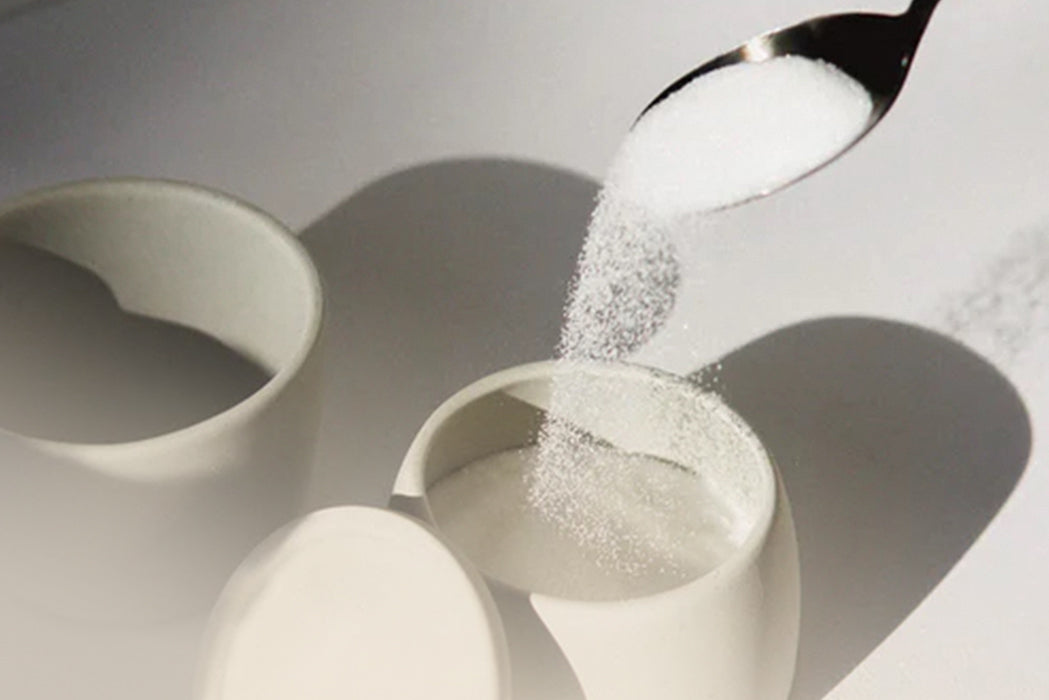

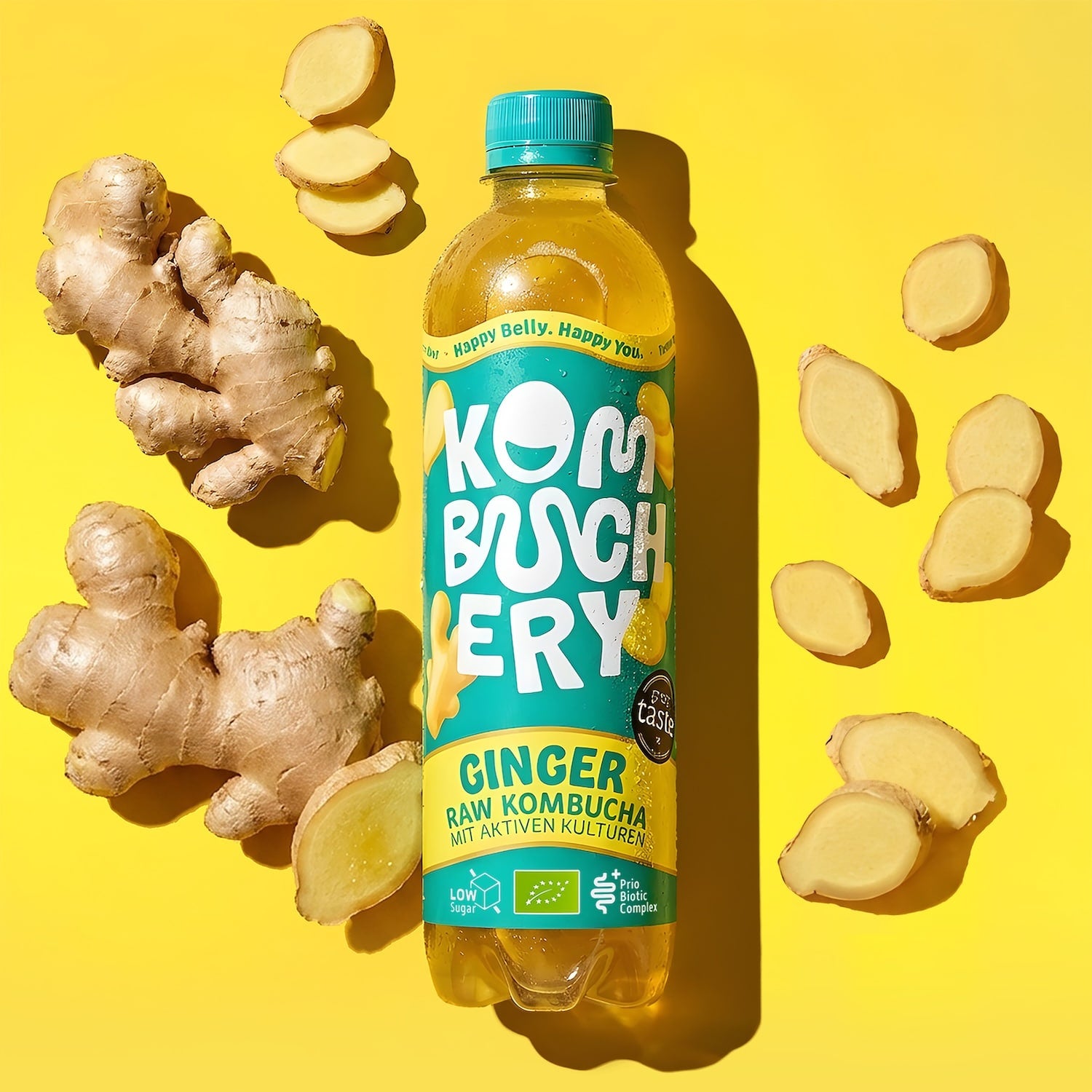
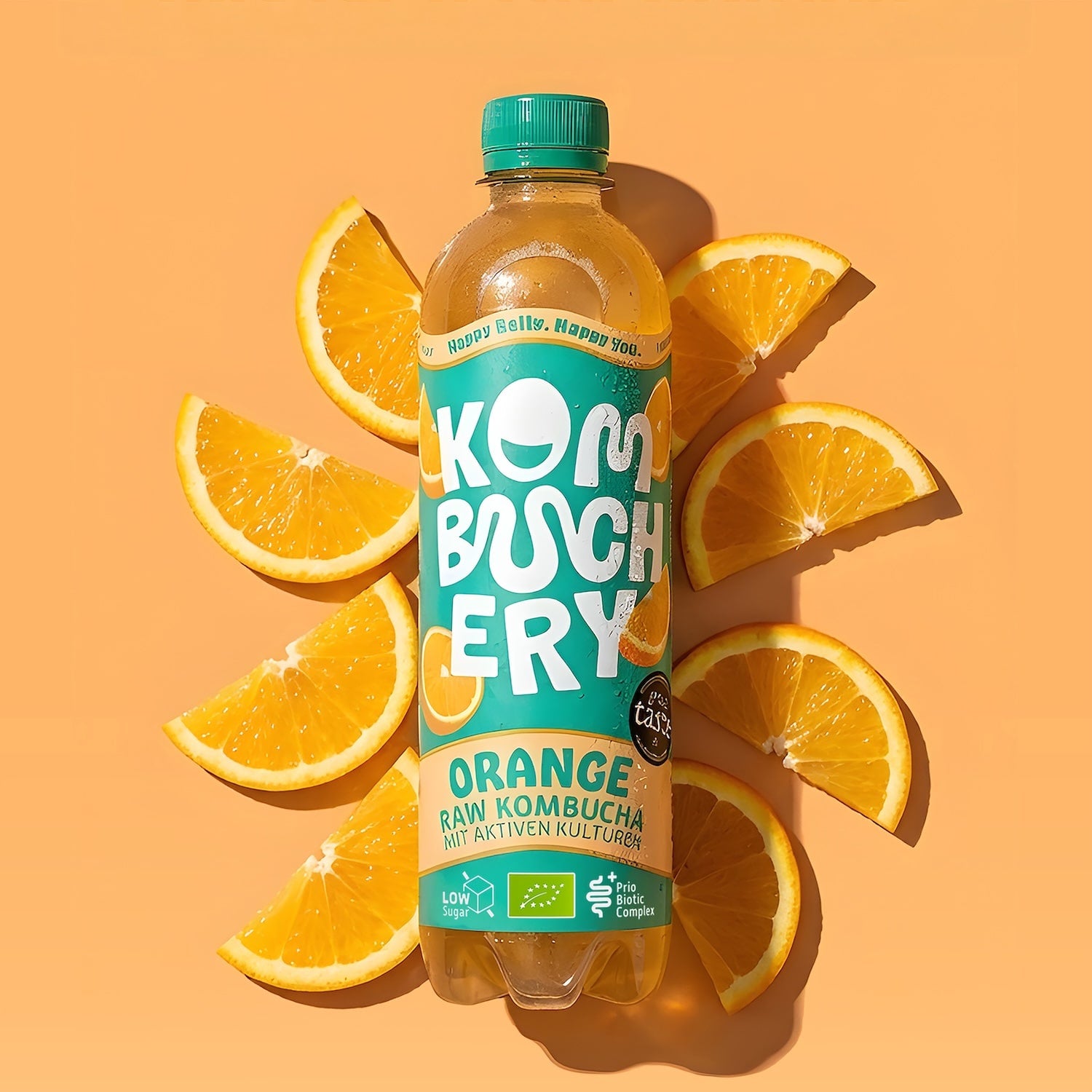

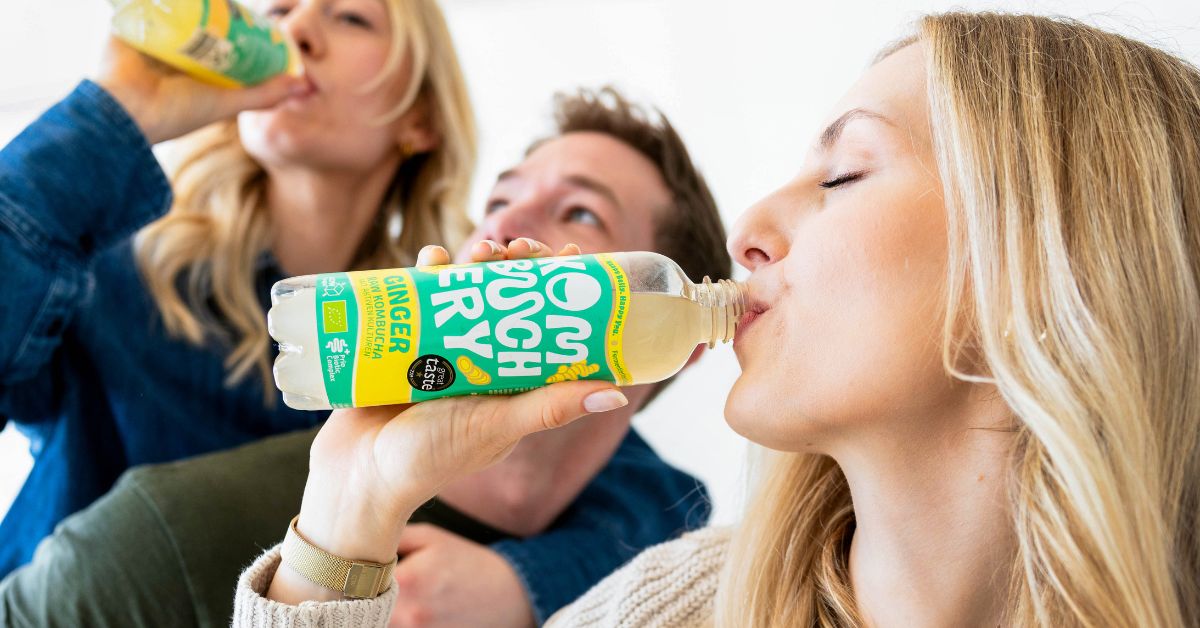
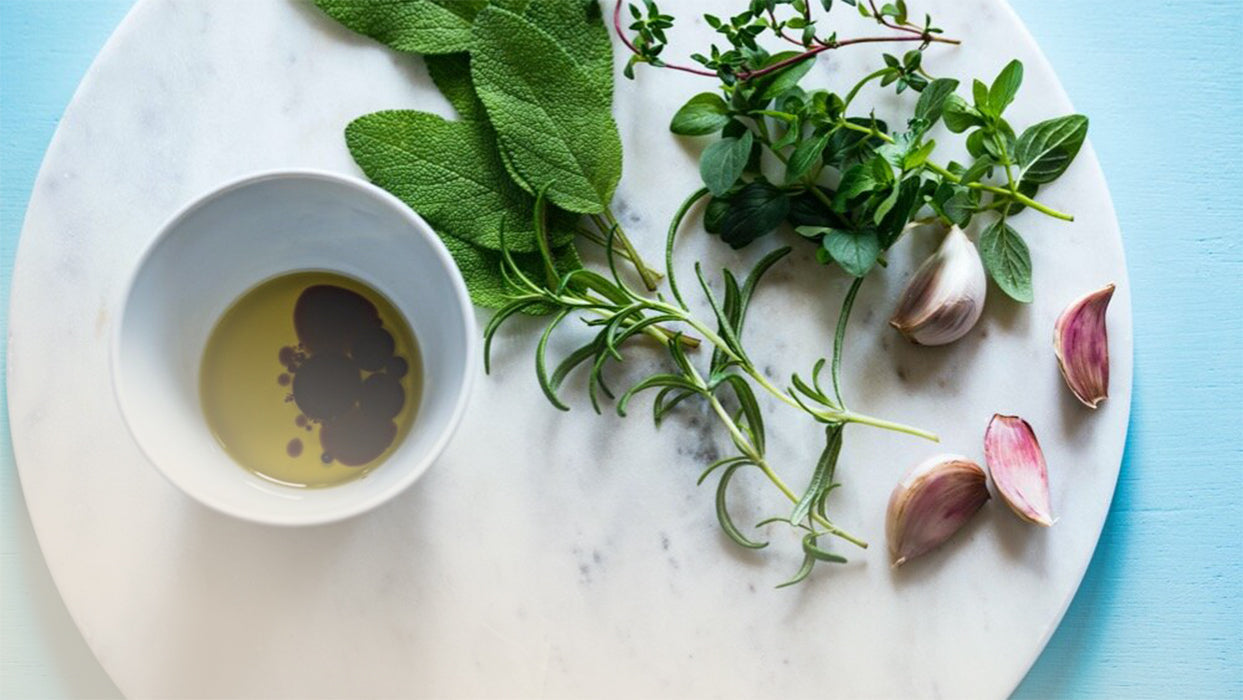



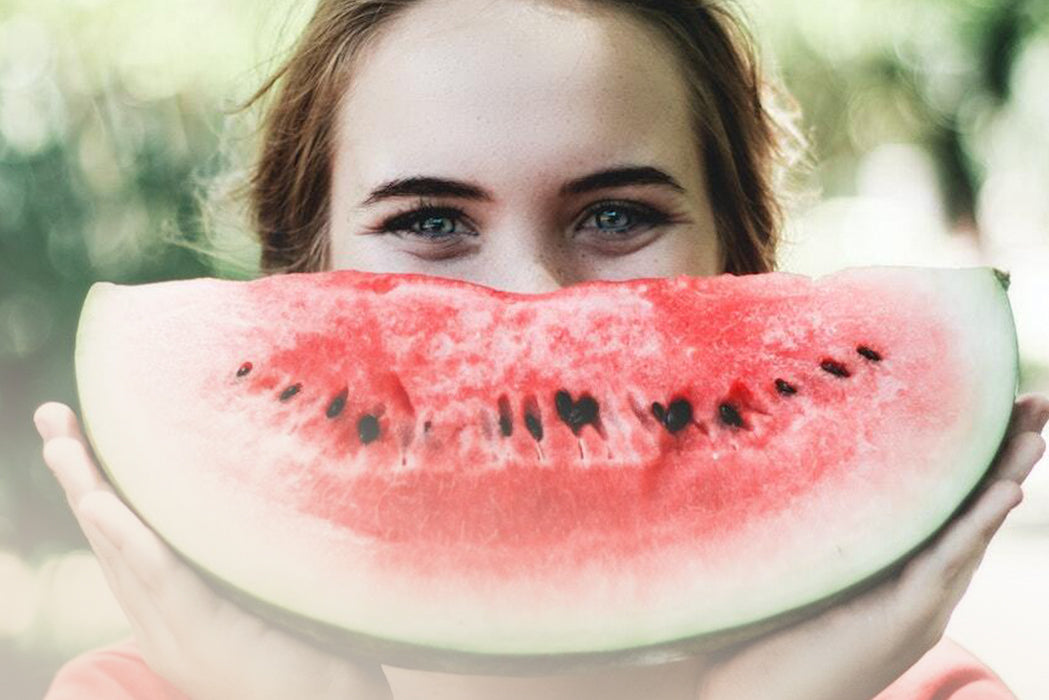
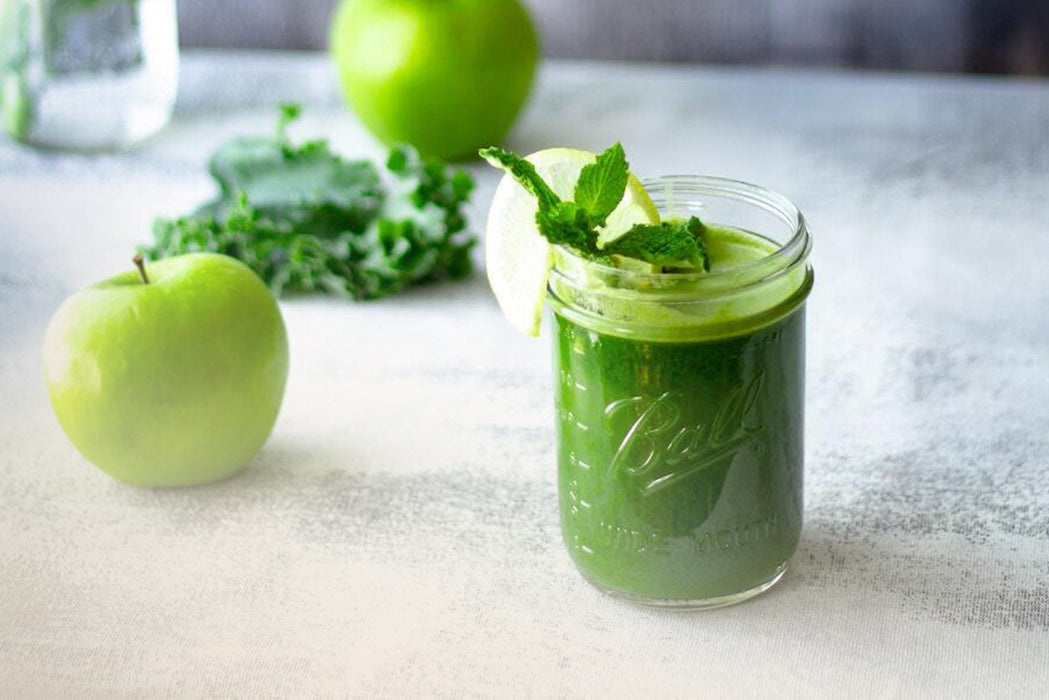

Split: